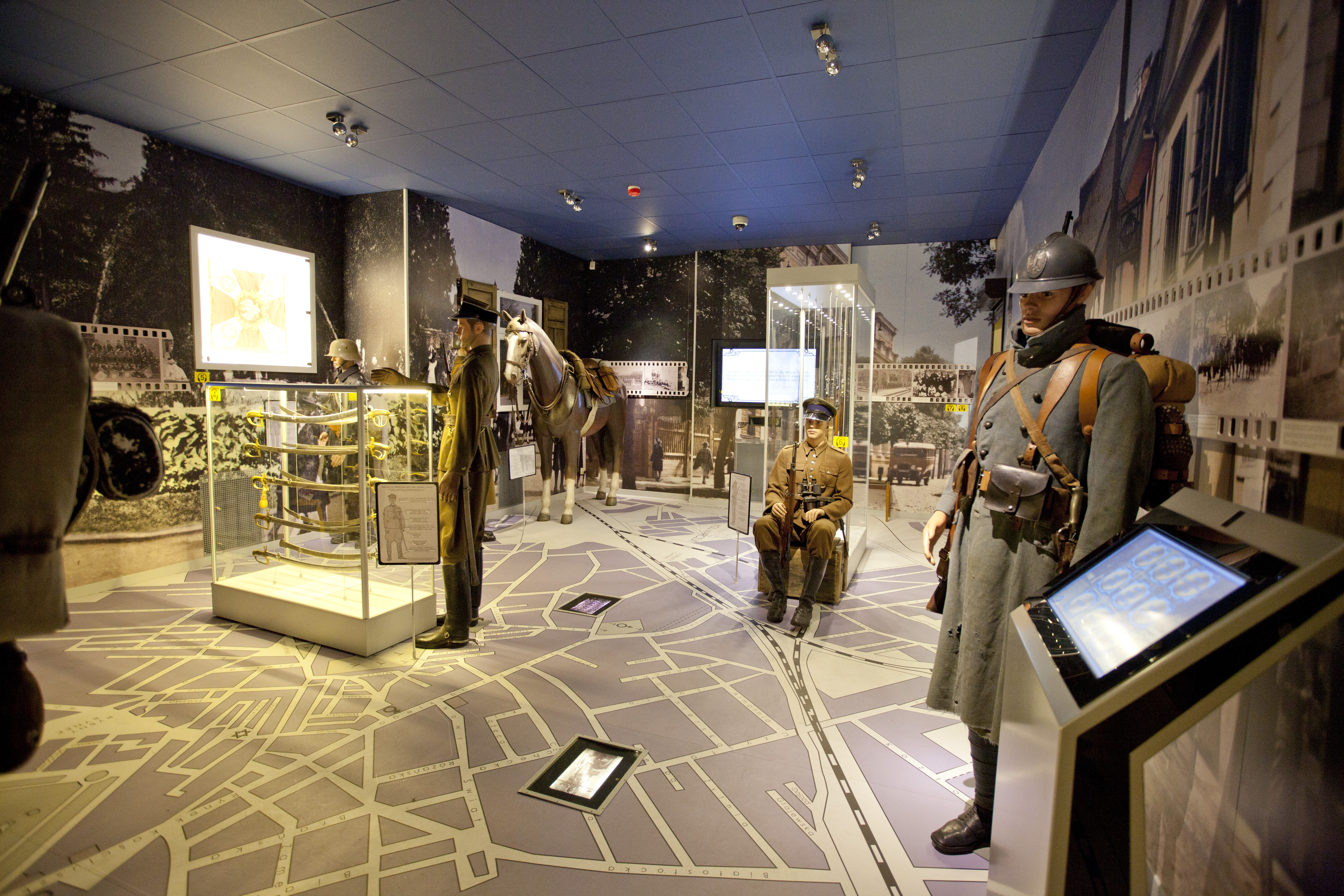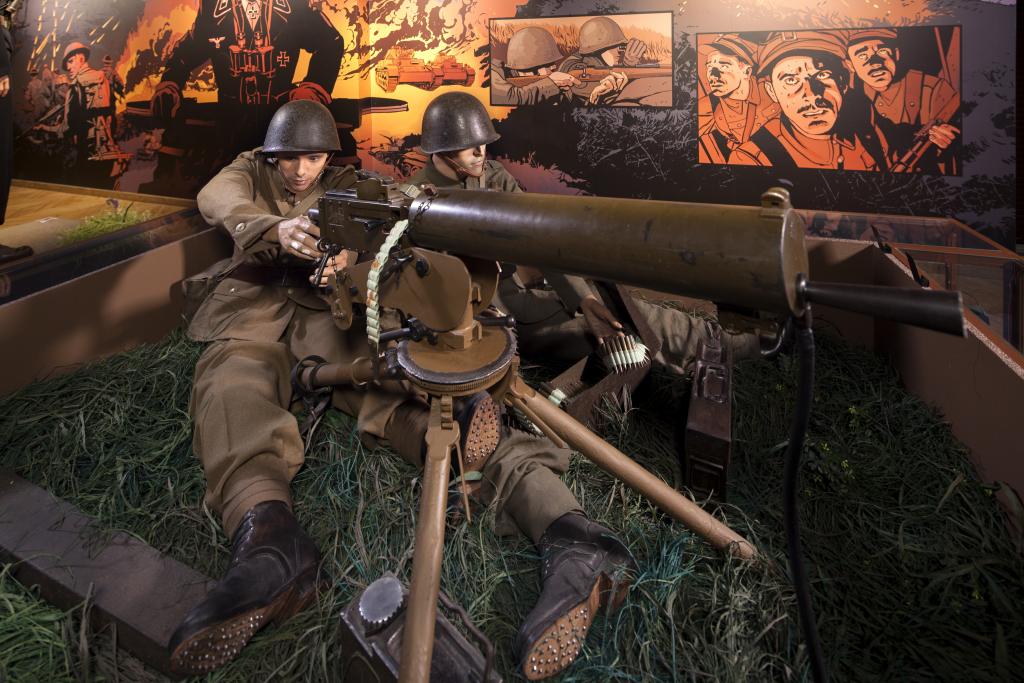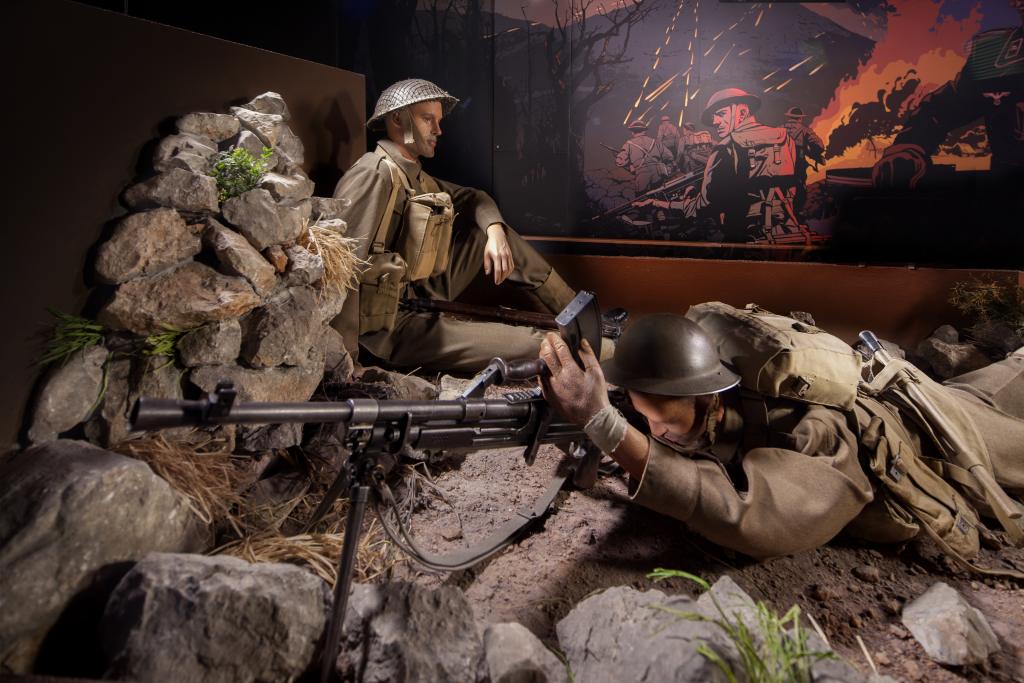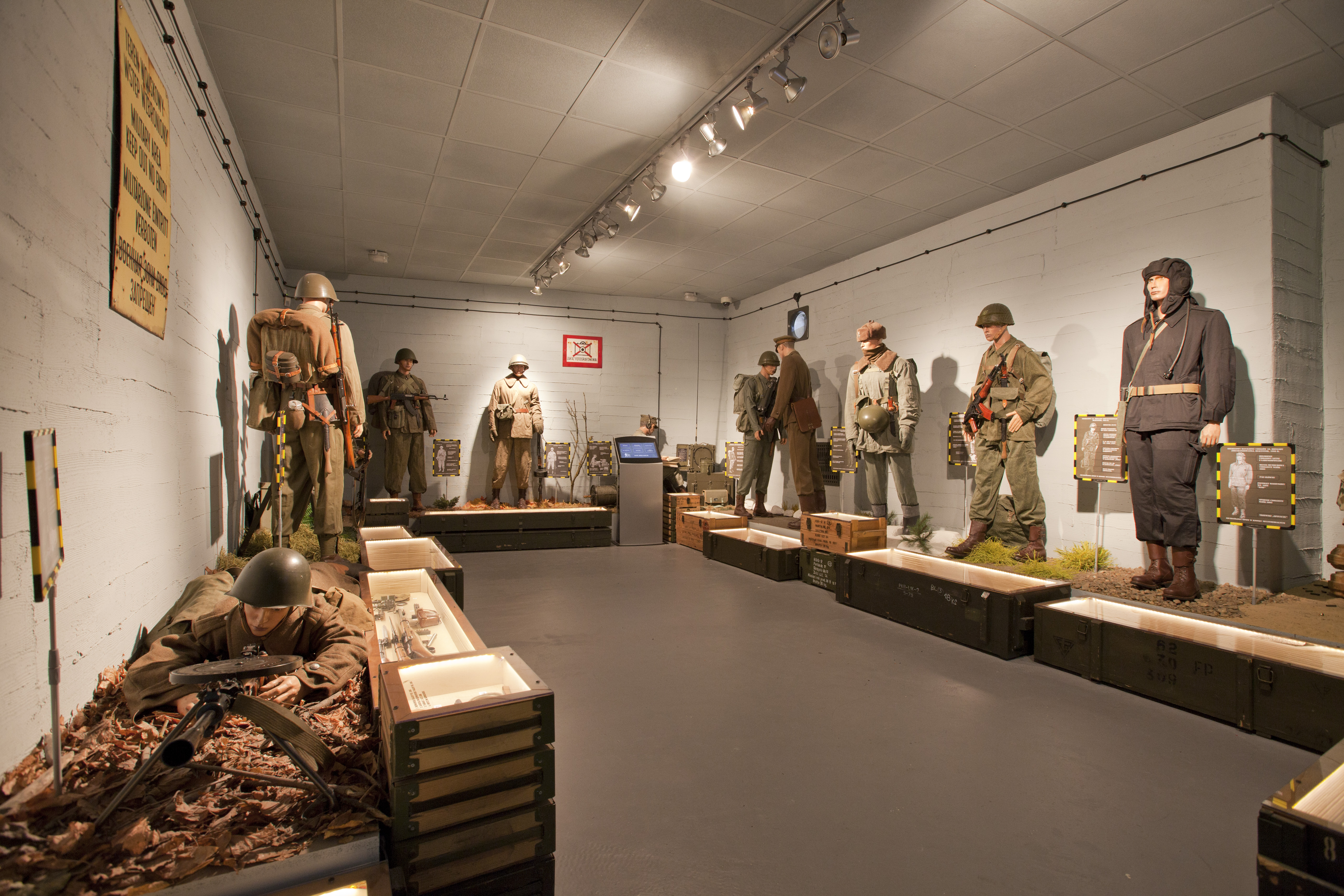‘Between Two Wars 1914–1939’

360° panorama
‘Between Two Wars 1914–1939’is the part of the permanent exhibition, chronologically depicting the oldest period. The exhibition tells about events that are of significance for the city and the region related to the course of World War I, the Polish-Soviet War and the interwar period. Its designhas been based on the sound historical knowledge. The authors’ intention has consisted in preparing a narrative exhibition, which, besidesthe cognitive values, will also be a place for conducting both the educational and research activities.
On the basis of the old photos and postcards, using the small scenery elements, we have recreated a fragment of pre-war Białystok with its characteristic buildings: Association of Merchants House, i.e. a tenement house on the corner of Sienkiewicza Street and KościuszkoMarket Square, the parish church or the Ritz Hotel. We have introduced the figures wearing he uniforms of the military units to the scenography prepared in this manner. In our view, this measure gives a visitor an opportunity to feel the atmosphere and participate in the life of the city at that time. The whole is complemented by the exhibits – presented both on the mannequins and in the showcases.
The exhibition is supplemented by the audio-visual technique used. On the basis of the conclusions from the previous years, we have decided to use the interactivekiosk, which is an excellent medium to convey a content in an extensive form. A replay station in the form of an antique telephone has also been made available to the visitors. Upon dialling a proper number on the rotary dial, the visitor will be able to listen to one of the known military songs in the handset in the traditional version, or… the version mixed contemporarily by a DJ. The recordings feature a description in Braille, constituting an interesting offer for the blind and visually impaired persons. It is worth mentioning that the audioguides have been used with the visually challenged personsin mind. However, they are also an interesting supplement to sightseeing for each of our visitors.
At the exhibition ‘Between Two Wars1914–1939’we sharethe digital reproductions of the works of art using the high-resolution photography. Due to this technology, we have created a gallery where you can not only view the works by J. Kossak, L. Winterowski or A. Trzeszczkowski (all from the collections of the Museum), but also closely follow their finest details. An analysis of the texture of the image or individual brush strokes becomes an adventure, available not only to the educated art historians.
‘Against Two Enemies. Military History of Podlasie and its Inhabitants in the Years 1939–1956’


360° panorama
The purpose of this exhibition is not to describe the entire history of World War II, but to select the aspects related to the broadly understood region of Podlasie and its people. It consists of the life-size dioramas, large-format and multimedia kiosks. The numerous showcases contain the exhibits –beginning from the armaments, trough the uniforms ending up with the personal belongings of the soldiers. The exhibition is divided into six dioramas, dynamically presenting the units of the various armies participating in World War II:
– September 1939 –the first diorama is a heavy machine gun stand with a crew of two. It presents the defence of the 33rd Infantry Regiment from Łomżanear Novgorod between 8–10 September.
– Two enemies – a part of the dioramas is dedicated to the army soldiers occupying the Podlasie region. Among them you can find a Red Army soldier from the troops entering Białystok in 1939, and a second lieutenant from the Wehrmacht from the fights on the so-called the BiałystokArch as a part of the Operation Barbarossa in June 1941.
– Monte Cassino– many soldiers fighting in this battle came from the north-eastern borderlands of the Second Polish Republic. They served in the 5th Kresowa Infantry Division. Among them was also RyszardKaczorowski, the last President of the Republic of Poland born in exile, who was born in Białystok. The diorama presents handling of the Bren light machine gun in its position, built of the authentic stones brought from the battlefield.
– Eastern Front 1944–1945 – in the summer of 1944, the front passed through Białystok for the third time during this war. On the diorama, you can see a mannequin in a uniform of a second lieutenant–a Red Army gunner. Another mannequin presents a grenadier of the 286th Infantry Division in the winter uniform during the fights along the Narew River in January 1945.
– Lusatia 1945 –the next diorama presents the 9th Dresden Infantry Division, i.e. the largest unit of the so-called Polish People’s Army, organised in Białystok. In April 1945, it took part in the battle of Bautzen, one of the bloodiest in which the Polish Army fought during World War II.
– Independence Underground – the last diorama presents an episode of the history of World War II until now missed in the exhibition at the Army Museum, namely the post-war Independence Underground. A few years after the end of World War II, there were fights between the armed underground groups and the security authorities in Podlasie.
‘Polish Army 1956–2010’

360° panorama
The exhibition ‘Polish Army 1956–2010’ depicts an evolution of the uniforms and equipment of the Polish Army in the second half of 20th century. The issue of a participation of the Polish Army in the NATO combat missions and the UN peacekeeping missions, which have significantly changed the equipment of the Polish soldiers over the past few years, has not been overlooked.
The exhibition comprises the mannequins in full uniforms, equipment and armament. The arrangements have been inspired by the units stationed in Białystok: 2ndPodlaski Internal Communications Regiment,25th Supreme Command Communications Regiment, 18th Mechanised Brigade and 18th Reconnaissance Regiment. Furthermore, we present the units stationed in the towns of the north-eastern region of Poland: Ełk, Zambrów and Ciechanów.
The exhibition ‘Polish Army 1956–2010’has been arranged as a scenery of a military warehouse featuring the concrete walls with the visible formwork imprints and cable bundles. The atmosphere isheightened bythe properly selected lighting. The showcases have been made from the old military storage boxes of the various sizes.



